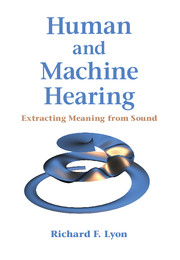Part III - The Auditory Periphery
Published online by Cambridge University Press: 28 April 2017
Summary
Part III Dedication: Georg von Békésy
This part is dedicated to the memory of Georg von Békésy (1899–1972), winner of the 1961 Nobel prize in medical science and physiology for his work on hearing. I never met Békésy, who died when I was still an undergraduate. I so admire his persistent work against tough odds in hearing research, and giving us the basic observations and model of how the cochlea works via traveling waves, that I felt this part of the book should be dedicated to him. My favorite quote is from his 1974 paper, published after his death (thanks to his punctual submission), in which he recalled his realization that “…, dehydrated cats and the application of Fourier analysis to hearing problems became more and more a handicap for research in hearing” (Békésy, 1974). I think we have gotten beyond the cat problem, and it is my hope that, through this book, we make progress toward the day when Fourier analysis no longer handicaps hearing research.
In this part of the book, we survey the auditory periphery, and develop a machine model of its sound-processing function. We review auditory filter models, and the fitting of auditory filter models to human and animal data, based on some of the filter types developed in Part II.
We extend these filter models to develop the CARFAC description of the cochlea based on filter cascade models of wave propagation, and present a machine implementation in detail, through the final output step of the cochlea: the release of neurotransmitter by the inner hair cells to stimulate the auditory nerve.
- Type
- Chapter
- Information
- Human and Machine HearingExtracting Meaning from Sound, pp. 237 - 238Publisher: Cambridge University PressPrint publication year: 2017

